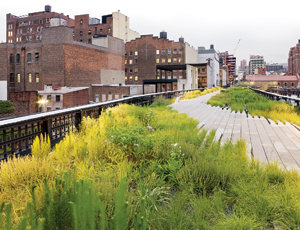There are some things nature does spectacularly well on its own, such as creating the great vistas of the Grand Canyon and many picturesque lakes and streams. There are some things nature does that don’t quite measure up, even though they are in areas where people wish there were more natural beauty. And then there are man-made activities that can make everything worse through development, neglect and poor planning.

Engineers traditionally have taken the lead in creating systems that replace natural functions on a grand scale to support sprawling populations. These drainage, wastewater and drinking-water systems are costly and sometimes unsightly and often don’t work as well as nature. And strict interpretation of Euclidean zoning tends to segregate land uses, creating an auto-centric culture that relies heavily on such systems.
Today, there is the growing phenomenon of clever landscape architects advancing development and restoration projects. They let nature shoulder some of the environmental load in an unobtrusive and even beautiful way that enhances the quality of life for everyone while also saving money.
Landscape architects launched a stealth mission over the past decade to move into a void. It was left by urban planners who dropped the ball in creating comprehensive plans that meld nature, environment and development to provide sustainable habitat. The landscape movement was started by academics who planted the seeds of creativity in their students before they entered practice. This has produced startling results.
In New York City, landscape architects took an abandoned elevated rail line and turned it into a spectacular urban park, the first section of which opened on June 8. Built in the early 1930s, the 1.45-mile High Line was an active railroad until 1980, after which it became known for the trees and grasses that grew on it naturally.
The High Line demonstrates how a blend of progressive urban planning and landscape architecture can promote economic growth while improving the quality of life. Dozens of new businesses have opened nearby as the area’s rundown neighborhood is revitalized. Landscape architecture works in big cities, suburbs and rural areas. Construction should accept the landscape architect as a full partner in the building process.

Post a comment to this article
Report Abusive Comment